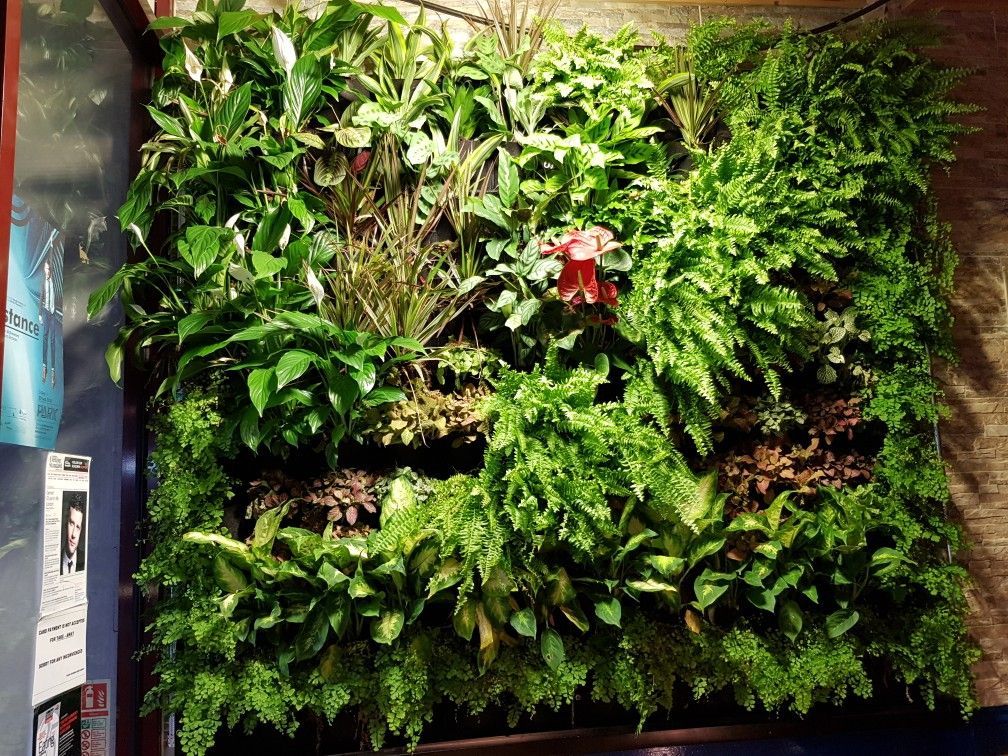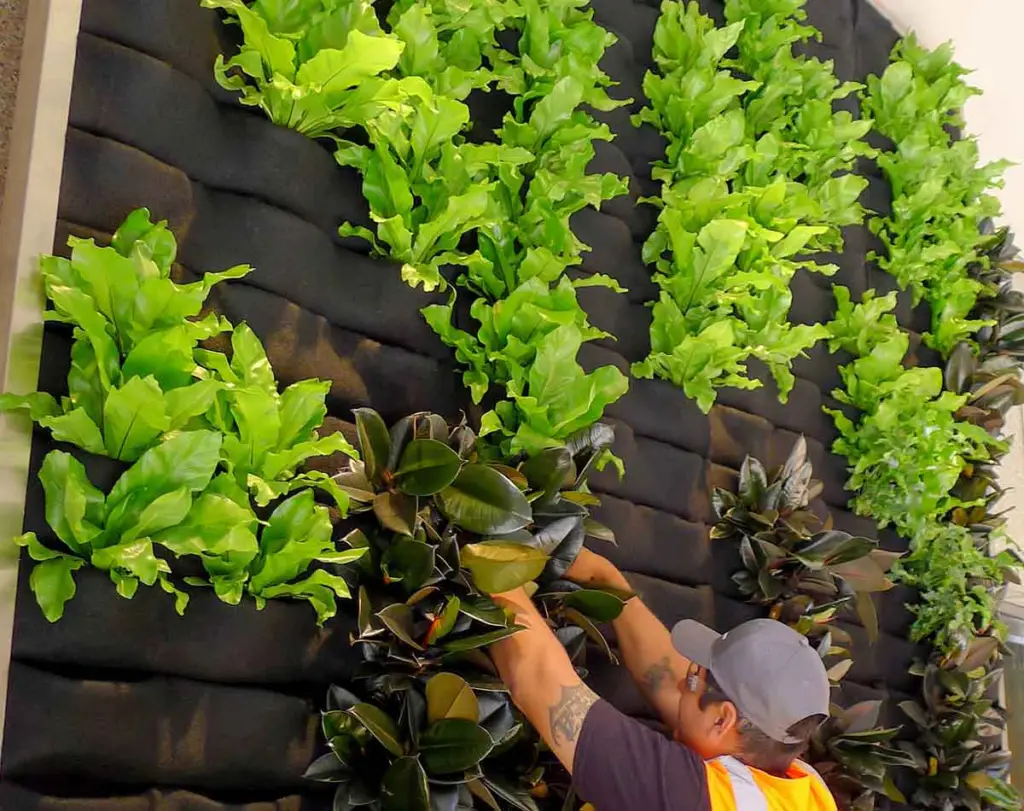
Introduction
Vertical gardening has gained immense popularity in recent years, offering an innovative solution for urban dwellers and individuals with limited space. This unique gardening technique involves growing plants vertically, either on walls, trellises, or hanging structures. The key to a thriving vertical garden lies in selecting the right plants that can adapt to this specific growing environment. In this article, we will explore the relevance and benefits of choosing the right plants for a vertical garden and highlight the importance of proper plant selection for successful vertical gardening.
Historical Background
The concept of vertical gardening dates back to ancient civilizations, where trellises and espalier techniques were used to cultivate plants vertically. These techniques allowed gardeners to maximize space and create visually appealing gardens. In modern times, vertical gardening has witnessed a resurgence in popularity, largely influenced by the rise of urban gardening and limited space gardening. With the increase in urbanization, individuals have turned to vertical gardening as a practical and aesthetically pleasing solution.
Key Concepts and Definitions
Vertical gardening refers to the practice of growing plants vertically, utilizing structures such as walls or trellises. This technique offers numerous benefits, including increased growing space and improved aesthetics. When selecting plants for vertical gardens, several factors need to be considered. These factors include light requirements, space and size constraints, watering and irrigation needs, soil and nutrient requirements, growth habits, and support structures. Proper plant selection based on these factors is crucial for the success of a vertical garden.

Main Discussion Points
Choosing plants based on light requirements
Different plants have varying light requirements, ranging from full shade to full sun. Understanding these light levels is essential for selecting plants that will thrive in a vertical garden. Shade-tolerant plants, such as ferns and hostas, are suitable for areas with limited sunlight, while sun-loving plants, like petunias and marigolds, flourish in sunny locations. By considering the light requirements of plants, gardeners can ensure optimal growth and health.
Selecting plants suitable for limited space and vertical growth
In vertical gardens, space is often limited, making it crucial to choose plants that can adapt to these constraints. Compact and trailing varieties are ideal for vertical gardens as they require minimal space and can cascade beautifully. Additionally, plants with shallow root systems and those that can be trained or trellised are excellent choices. This allows for more efficient use of vertical space while maintaining the overall health and vigor of the plants.
Considering water and irrigation needs in vertical gardens
Proper watering techniques are essential for the success of any garden, including vertical gardens. Different plants have varying water requirements, and it is crucial to select plants that can thrive in the available water conditions. Some plants may require more frequent irrigation, while others may tolerate drier conditions. By considering the water and irrigation needs of plants, gardeners can create a balanced and sustainable vertical garden.

Understanding soil and nutrient requirements for vertical gardens
Vertical gardens require well-draining soil with proper pH levels to ensure optimal plant growth. Gardeners should consider the specific nutrient requirements of plants and provide suitable fertilizers or amendments accordingly. The use of organic matter and compost can help improve soil fertility and promote healthy root development. By understanding the soil and nutrient requirements, gardeners can create an ideal growing environment for their vertical gardens.
Matching plant growth habits with appropriate support structures
Different support structures, such as trellises, stakes, or hanging baskets, are used in vertical gardens to provide support and stability to the plants. Gardeners should select plants that naturally climb or cascade to match the available support structures. This ensures that the plants can grow and develop properly without becoming overcrowded or tangled. By considering the growth habits of plants, gardeners can create visually appealing vertical gardens that are structurally sound.
Addressing maintenance and care considerations for vertical gardens
Regular maintenance is essential for the health and longevity of vertical gardens. This includes proper pruning, pest control, and fertilization. By regularly pruning plants, gardeners can maintain the desired shape and prevent overcrowding. Effective pest control measures, such as using organic insecticides or implementing integrated pest management strategies, can help prevent infestations. Fertilization is also important to provide plants with the necessary nutrients for sustained growth and vitality. By addressing these maintenance and care considerations, gardeners can ensure a thriving vertical garden.
Case Studies or Examples
To further understand the concept of vertical gardening and plant selection, let’s explore some real-world examples of successful vertical gardens. These examples showcase different plant choices and provide inspiration for aspiring vertical gardeners. Additionally, specific plants that thrive in vertical garden settings will be highlighted, demonstrating the versatility of plant selection for vertical gardens.

Current Trends or Developments
Vertical gardening is a constantly evolving practice, with ongoing advancements in technology and innovative plant selections. Automated irrigation systems and modular planting systems have made vertical gardening more accessible and efficient. These advancements save time and resources while ensuring the optimal growth of plants. Moreover, new plant selections and combinations continue to emerge, offering gardeners a wider range of options to create unique and visually striking vertical gardens.
Challenges or Controversies
Vertical gardening, like any gardening practice, comes with its own set of challenges. Limited sunlight or strong winds are common challenges faced in vertical gardening. Gardeners must find creative solutions to mitigate these challenges and ensure the success of their vertical gardens. Additionally, differing viewpoints on plant selection for vertical gardens can lead to controversies. It is important to consider different perspectives and adapt plant selection strategies based on individual needs and preferences.
Future Outlook
The future implications of vertical gardening on urban landscapes are promising. As urbanization continues to increase, vertical gardening offers a sustainable and aesthetically pleasing solution to limited space. The impact of vertical gardening on urban environments is expected to grow, with potential advancements and trends in plant selection. As technology continues to evolve, vertical gardens may become more integrated into urban design, creating greener and more livable cities.
Conclusion
Choosing the right plants is crucial for the success of a vertical garden. By considering factors such as light requirements, space constraints, watering needs, soil and nutrient requirements, growth habits, and support structures, gardeners can create thriving vertical gardens. Proper plant selection ensures optimal growth, health, and aesthetics. Vertical gardening offers a unique and innovative way to cultivate plants in limited spaces, bringing nature closer to urban dwellers.
References
For further reading and research on vertical gardening and plant selection, consider exploring the following resources:
“Vertical Gardening: Grow Up, Not Out, for More Vegetables and Flowers in Much Less Space” by Derek Fell
VerticalGardening.com – a website dedicated to vertical gardening techniques, tips, and plant selection
Research articles on vertical gardening and its benefits from academic journals such as the Journal of Horticultural Science and Technology
Remember to consult local gardening experts and resources specific to your region for tailored advice and plant selection guidance. Happy vertical gardening!




